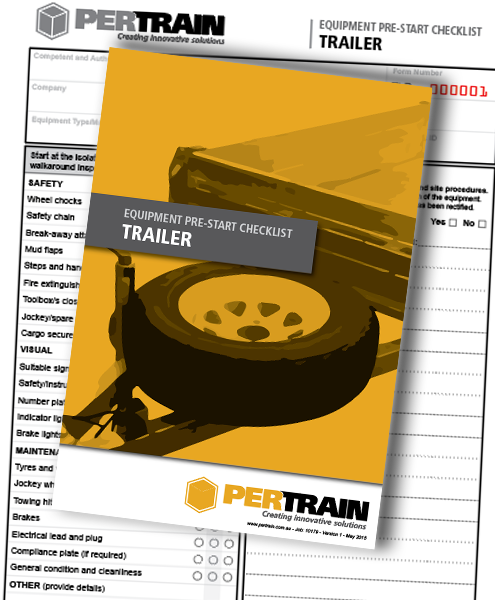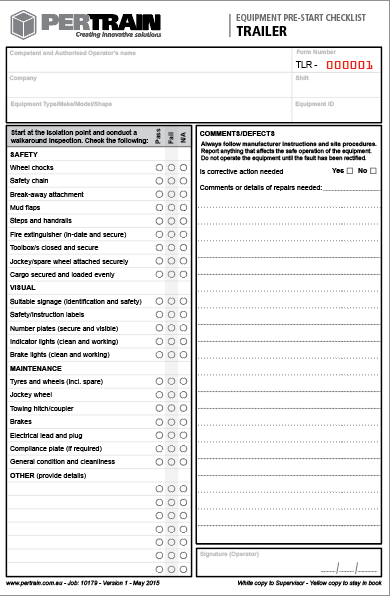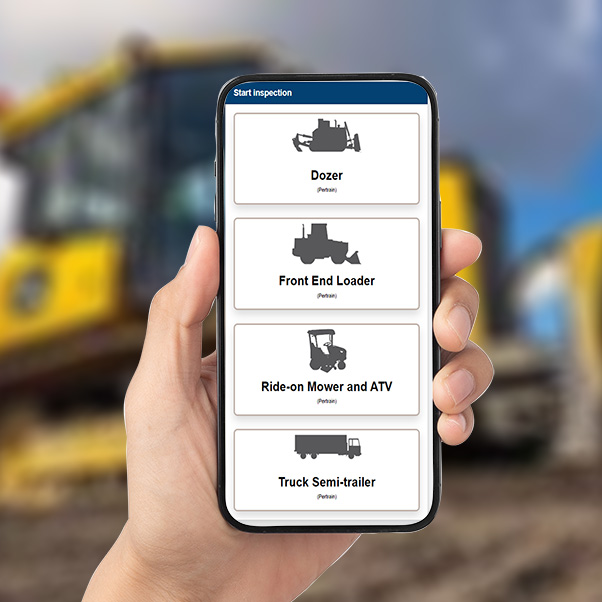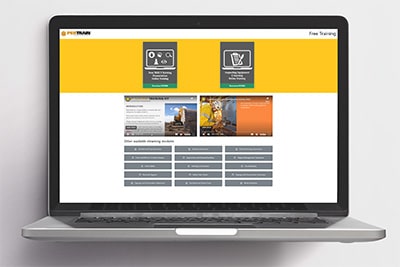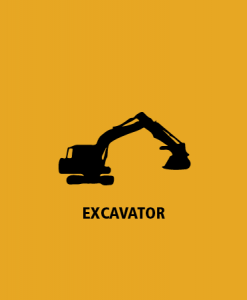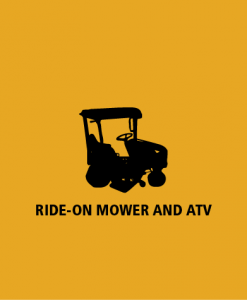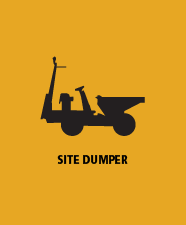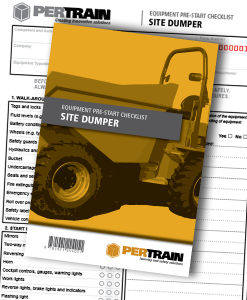Trailer Pre-Start Checklist Book
Our Trailer Pre-Start Checklist Book is designed by industry professionals to assist equipment owners and operators in meeting their obligations while promoting a safe working environment.
Purpose of a Trailer Prestart Book
- Identifies potential mechanical or safety issues before operation.
- Ensures compliance with workplace health and safety (WHS) regulations.
- Helps maintain a preventative maintenance schedule.
- Provides a record of inspections for auditing and compliance.
What’s Included in a Trailer Prestart Book?
-
Vehicle Details:
- Trailer make, model, and serial number.
- Operator name and signature
- Date and time
- Plant number or fleet ID.
-
Prestart Inspection Checklist:
- Tyres – Condition, tread, inflation, wheel nuts
- Brakes – Air lines, connections, and function (if applicable)
- Lights – Brake lights, indicators, reflectors, tail lights
- Suspension – Springs, airbags, and mounts
- Coupling – Pin/ball hitch, kingpin, safety chains
- Chassis & Frame – Cracks, rust, general damage
- Load Restraints – Straps, chains, winches, anchor points
- Electrical Connections – Secure and functioning
- Landing Legs / Stands – Damage and operation
- Mudflaps & Guards – Secure and intact
- Signs & Labels – Dangerous goods signage, if required
- Other Equipment – Toolboxes, fire extinguishers (if fitted)
-
Defect Reporting Section:
- Space to record any issues found during the inspection.
- Area for operator’s signature and supervisor’s acknowledgment.
-
Maintenance Log:
- Notes on repairs or servicing conducted.
-
Operator Sign-Off:
- Confirmation that the prestart has been completed.
- Acknowledgment of any identified faults.
Who Uses an Trailer Prestart Book?
- Operators – Complete the checklist before operating the truck.
- Supervisors & Safety Officers – Review logs to ensure compliance.
- Maintenance Teams – Use records to schedule servicing and repairs.
- Safety Officers: Audit the books for compliance and incident investigations.
Why is it Important?
- Prevents breakdowns and reduces costly repairs.
- Improves safety by identifying hazards before operation.
- Meets workplace and regulatory requirements (e.g., Australian WHS laws).
- Provides a legal record of equipment inspections in case of an incident.
Equipment Owners have a legal requirement to provide equipment that’s fit–for–purpose and safe to use.
Equipment Operators have an obligation to ensure equipment is safe to use before using it.
For larger orders we offer full customisation (Add a logo, change colours or alter the checksheets). Call us for a price.

